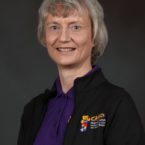Background
The Canadian Assessment of Physical Literacy (CAPL) assesses the capacity of children to lead a physically active lifestyle. It is comprised of a battery of standardized assessment protocols that reflect the Canadian consensus definition of physical literacy. The Royal Bank of Canada Learn to Play – Canadian Assessment of Physical Literacy study implemented the CAPL with 10,034 Canadian children (50.1% female), 8 to 12 years of age. Feedback during data collection, necessary changes identified by the coordinating centre, and recent data analyses suggested that a streamlined, second edition of the CAPL was required. The purpose of this paper is to describe the methods used to develop the CAPL second edition (CAPL-2).
Methods
The larger dataset created through the RBC–Learn to Play CAPL study enabled the re-examination of the CAPL model through factor analyses specific to Canadian children 8 to 12 years of age from across Canada. This comprehensive database was also used to examine the CAPL protocols for redundancy or variables that did not contribute significantly to the overall assessment. Removing redundancy had been identified as a priority in order to reduce the high examiner and participant burden. The “lessons learned” from such a large national surveillance project were reviewed for additional information regarding the changes that would be required to optimize the assessment of children’s physical literacy. In addition, administrative changes, improvements, and corrections were identified as necessary to improve the quality and accuracy of the CAPL manual and training materials.
Results
For each domain of the CAPL, recommended changes based on the factor analyses, qualitative feedback and theoretical considerations significantly reduced the number of protocols. Specific protocol combinations were then evaluated for model fit within the overarching concept of physical literacy. The CAPL-2 continues to reflect the four components of the Canadian consensus definition of physical literacy: Motivation and Confidence, Physical Competence, Knowledge and Understanding, and engagement in Physical Activity Behaviour. The CAPL-2 is comprised of three Physical Competence protocols (plank, Progressive Aerobic Cardiovascular Endurance Run [PACER], Canadian Agility and Movement Skill Assessment [CAMSA]), two Daily Behaviour protocol (pedometer steps, self-reported physical activity), and a 22-item questionnaire assessing the physical literacy domains of Motivation and Confidence, and Knowledge and Understanding. Detailed information about the CAPL-2 is available online (www.capl-eclp.ca).
Conclusions
The CAPL-2 dramatically reduces examiner and participant burden (three Physical Competence protocols, two Daily Behaviour protocols, and a 22-response questionnaire; versus eight Physical Competence protocols, three Daily Behaviour protocols and a 72-response questionnaire for the original CAPL), while continuing to be a comprehensive assessment of all aspects of children’s physical literacy using the Canadian consensus definition of this term. Like the original, the CAPL-2 continues to offer maximum flexibility to practitioners, who can choose to complete the entire CAPL-2 assessment, only one or more domains, or select individual protocols. Regardless of the assessment selected, scores are available to interpret the performance of each child relative to Canadian children of the same age and sex. All of the protocols included in the CAPL-2 have published reports of validity and reliability for this age group (8 to 12 years). The detailed manual for CAPL-2 administration, along with training materials and other resources, are available free of charge on the CAPL-2 website (www.capl-eclp.ca). All CAPL-2 materials and resources, including the website, are available in both English and French.
Researchers
-
Patricia Longmuir
Senior Scientist, CHEO Research Institute
-
Mark S. Tremblay
Senior Scientist, CHEO Research Institute


